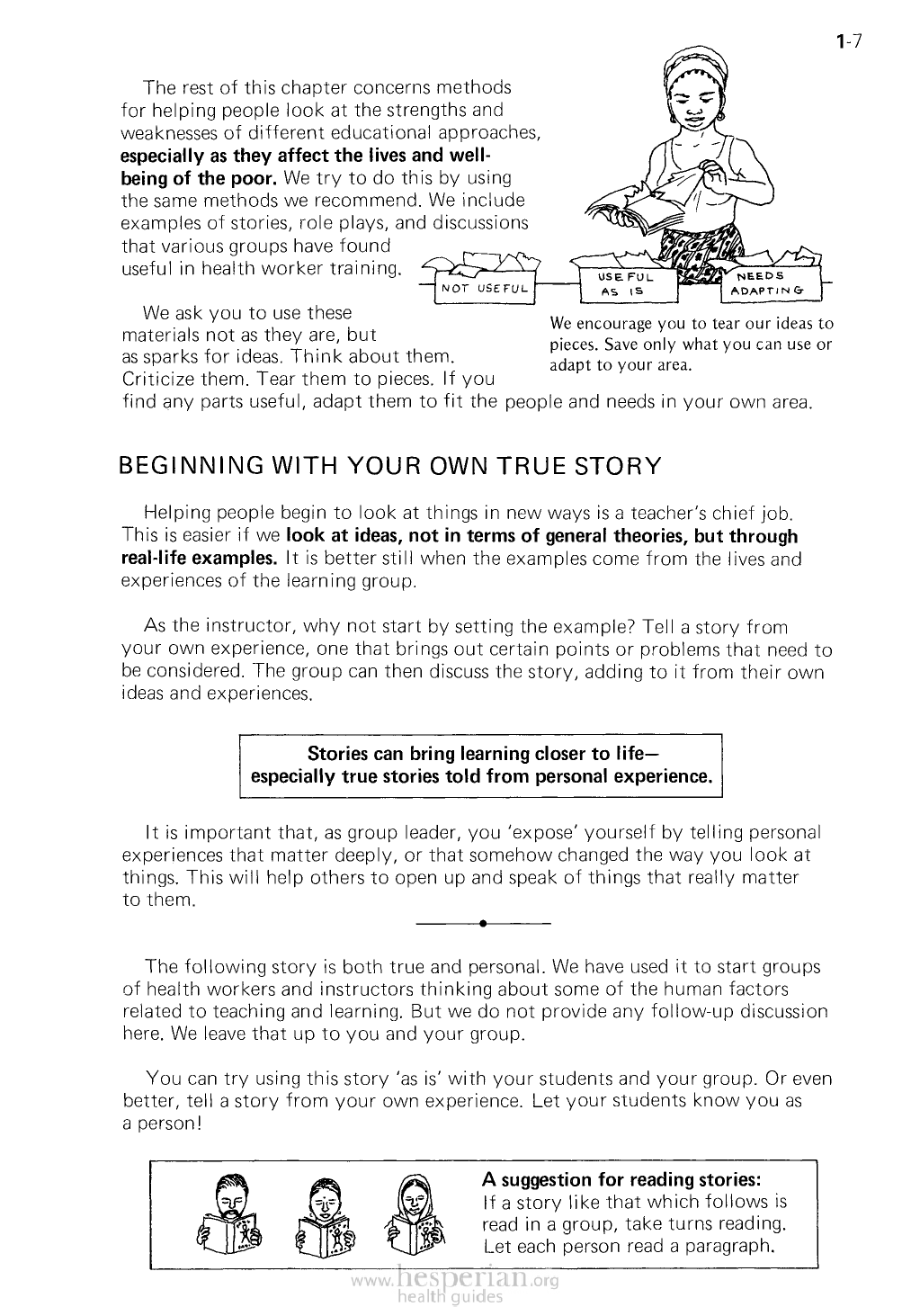
1-7
The rest of this chapter concerns methods
for helping people look at the strengths and
weaknesses of different educational approaches,
especially as they affect the lives and well-
being of the poor. We try to do this by using
the same methods we recommend. We include
examples of stories, role plays, and discussions
that various groups have found
useful in health worker training.
We ask you to use these materials
not as they are, but as sparks “tor
ideas. Think about them. Criticize
them. Tear them to pieces. If you find
We encourage you to tear our ideas to
pieces. Save only what you can use or
adapt to your area.
any parts useful, adapt them to fit the people and needs in your own area.
BEGINNING WITH YOUR OWN TRUE STORY
Helping people begin to look at things in new ways is a teacher’s chief job. This is
easier if we look at ideas, not in terms of general theories, but through real-life
examples. It is better still when the examples come from the lives and experiences
of the learning group.
As the instructor, why not start by setting the example? Tell a story from your
own experience, one that brings out certain points or problems that need to be
considered. The group can then discuss the story, adding 10 it from their own ideas
and experiences.
Stories can bring learning closer to life—
especially true stories told from personal experience.
It is important that, as group leader, you ‘expose’ yourself by telling personal
experiences that matter deeply, or that somehow changed the way you look at
things. This will help others to open up and speak of things that really matter to
them.
The following story is both true and personal. We have used it to start groups of
health workers and instructors thinking about some of the human factors related
to teaching and learning. But we do not provide any follow-up discussion here. We
leave that up to you and your group.
You can try using this story ‘as is’ with your students and your group. Or even
better, tell a story from your own experience. Let your students know you as a
person!
A suggestion for reading stories:
If a story like that which follows is
read in a group, take turns reading.
Let each person read a paragraph.